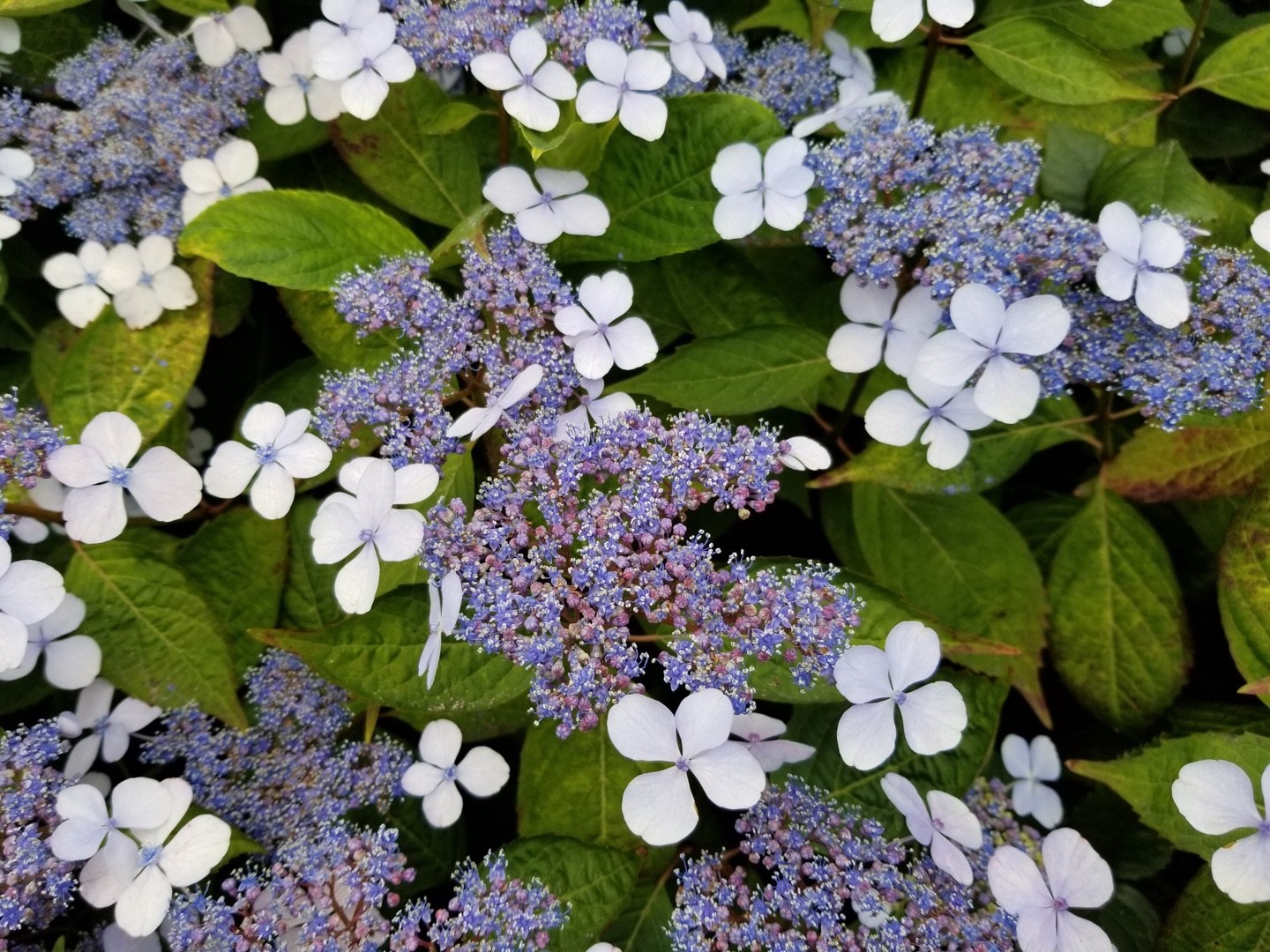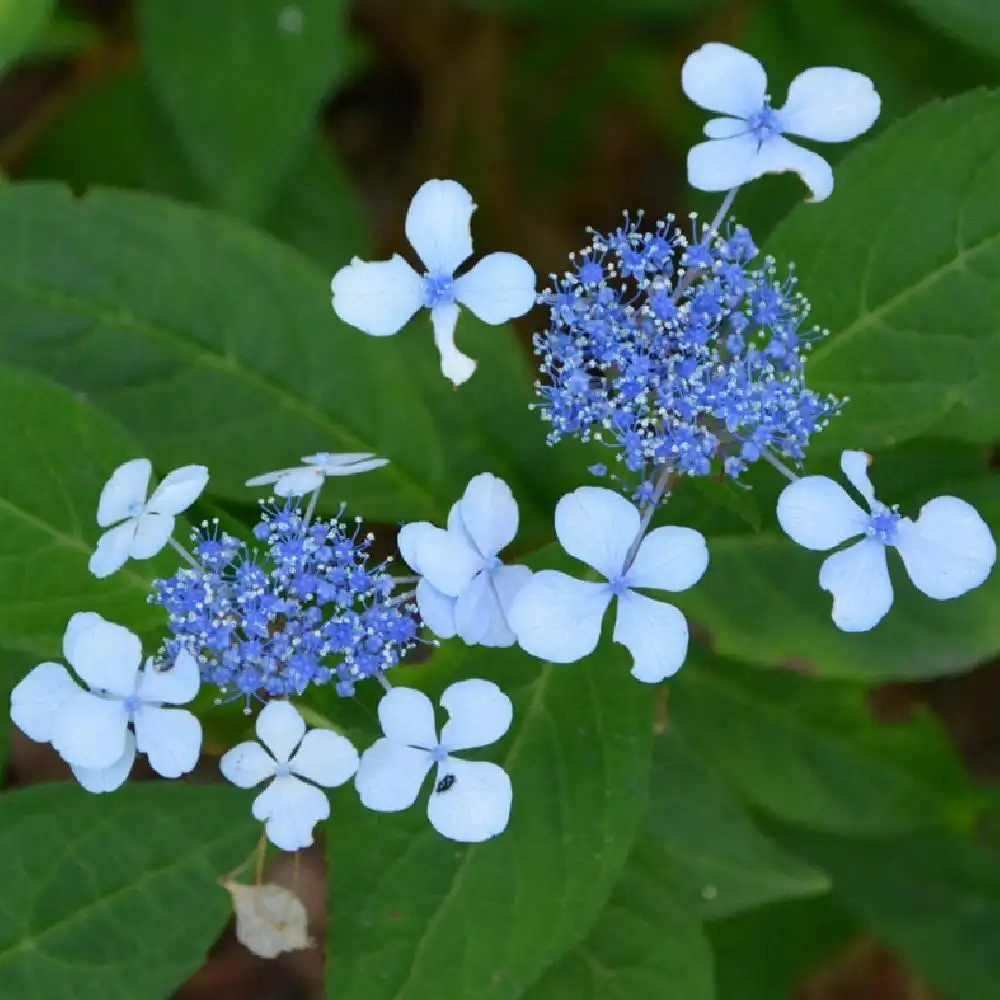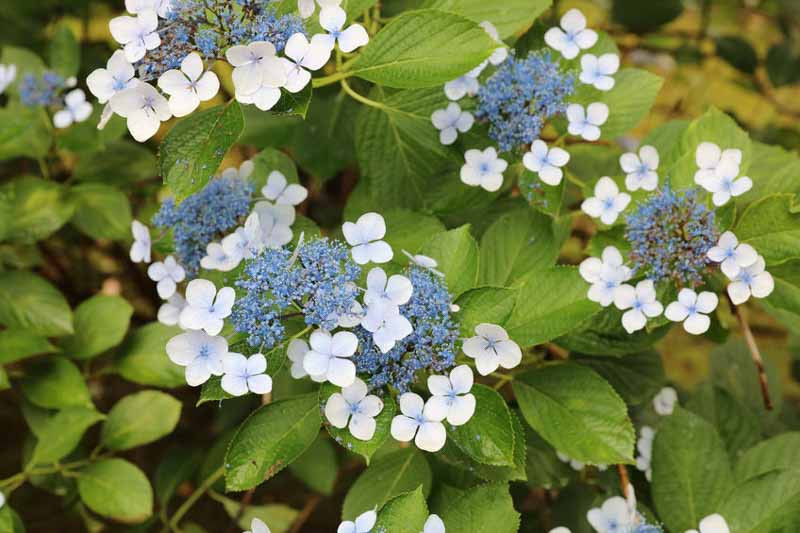How To Grow Hydrangea Serrata Bluebird: The Ultimate Guide
Hydrangea serrata Bluebird is a beautiful, hardy shrub that is perfect for adding color and interest to any garden. It is known for its delicate, blue flowers that bloom in the summer months. Hydrangea serrata Bluebird is relatively easy to grow, but there are a few things you need to know to keep it healthy and thriving.
In this guide, we will discuss everything you need to know about growing Hydrangea serrata Bluebird, from choosing the right location to planting and caring for your shrub. We will also provide some tips on how to prevent common problems and diseases.
Choosing the Right Location
The first step to growing Hydrangea serrata Bluebird is choosing the right location. This shrub prefers full sun to partial shade, but it can tolerate some direct sunlight. It is also important to plant Hydrangea serrata Bluebird in a location with well-drained soil. This shrub is susceptible to root rot, so it is important to avoid planting it in areas where the soil is prone to staying wet.
Planting Hydrangea Serrata Bluebird
Once you have chosen the right location, you can plant your Hydrangea serrata Bluebird. Dig a hole that is twice the width and depth of the root ball. Amend the soil with some compost or other organic matter. Place the shrub in the hole and backfill with soil, tamping down gently. Water the shrub well.
Caring for Hydrangea Serrata Bluebird
Hydrangea serrata Bluebird is relatively low-maintenance, but there are a few things you need to do to keep it healthy and thriving. Water your shrub regularly, especially during hot, dry weather. Apply a balanced fertilizer to your shrub in the spring and fall. Prune your shrub in the spring to remove dead, damaged, or diseased branches.
Preventing Problems
Hydrangea serrata Bluebird is susceptible to a few common problems, including root rot, powdery mildew, and aphids. To prevent root rot, plant your shrub in well-drained soil. To prevent powdery mildew, water your shrub in the morning so that the leaves have a chance to dry before nightfall. To prevent aphids, spray your shrub with insecticidal soap or neem oil.
Enjoying Your Hydrangea Serrata Bluebird
With proper care, your Hydrangea serrata Bluebird will reward you with beautiful, blue flowers for many years to come. Plant one today and add a touch of elegance to your garden.
If you are looking for a beautiful and easy-care hydrangea, the hydrangea serrata bluebird is a great option. This compact shrub produces stunning lacecap flowers in shades of blue, pink, or mauve, depending on the soil pH. The flowers bloom from June to September, and the foliage turns a brilliant red in autumn.
The hydrangea serrata bluebird is relatively drought-tolerant and can be grown in full sun or partial shade. It prefers well-drained soil, but it is not too fussy about the pH. This makes it a good choice for gardeners in a variety of climates.
If you are interested in learning more about the hydrangea serrata bluebird, I recommend visiting the website . This website has a wealth of information about this beautiful flower, including its history, care, and cultivation. You can also find photos and videos of the hydrangea serrata bluebird in bloom.
FAQ of hydrangea serrata bluebird
- What is Hydrangea serrata Bluebird?
Hydrangea serrata Bluebird is a deciduous shrub that is native to Japan and Korea. It grows to be about 4-6 feet tall and has dark green leaves that turn red in the fall. The flowers are blue and appear in summer. Hydrangea serrata Bluebird is a relatively low-maintenance plant that is easy to grow.
- What are the best growing conditions for Hydrangea serrata Bluebird?
Hydrangea serrata Bluebird prefers well-drained, humus-rich soil in a location that receives partial shade. It is important to avoid planting Hydrangea serrata Bluebird in full sun, as this can scorch the leaves. The plant is also tolerant of light frost and can be grown in USDA hardiness zones 5-9.
- How do I care for Hydrangea serrata Bluebird?
Hydrangea serrata Bluebird is a relatively low-maintenance plant. It requires regular watering, especially during the hot summer months. The plant should also be fertilized in the spring with a balanced fertilizer. In the fall, it is important to deadhead the spent flowers.
- How do I propagate Hydrangea serrata Bluebird?
Hydrangea serrata Bluebird can be propagated by softwood cuttings or by division. Softwood cuttings are taken in the spring from new growth. The cuttings should be about 4-6 inches long and should be dipped in rooting hormone before being planted in a well-drained potting mix. Division is done in the spring or fall by carefully digging up the plant and dividing it into two or more sections. Each section should have at least a few roots and some new growth.
- What are some common pests and diseases of Hydrangea serrata Bluebird?
Hydrangea serrata Bluebird is susceptible to a few common pests and diseases, including aphids, scale insects, and powdery mildew. Aphids can be controlled by spraying the plant with insecticidal soap or neem oil. Scale insects can be controlled by scraping them off the plant with a dull knife or by applying horticultural oil. Powdery mildew can be controlled by spraying the plant with a fungicide.
Image of hydrangea serrata bluebird
5 different images of "hydrangea serrata bluebird" from Pinterest:
- Image 1: A full bush of hydrangea serrata bluebird in bloom. The flowers are a deep blue color and are arranged in clusters. The leaves are a dark green color and are oval-shaped.

- Image 2: A close-up of a single hydrangea serrata bluebird flower. The petals are a deep blue color and are slightly curled. The center of the flower is white.
- Image 3: A hydrangea serrata bluebird bush in the shade. The flowers are a lighter blue color than in the previous images. The leaves are a darker green color.

- Image 4: A hydrangea serrata bluebird bush in a pot. The flowers are a bright blue color. The leaves are a dark green color.

- Image 5: A hydrangea serrata bluebird bush in a garden. The flowers are a deep blue color. The leaves are a dark green color. The bush is surrounded by other flowers and plants.

Post a Comment for "How To Grow Hydrangea Serrata Bluebird: The Ultimate Guide"